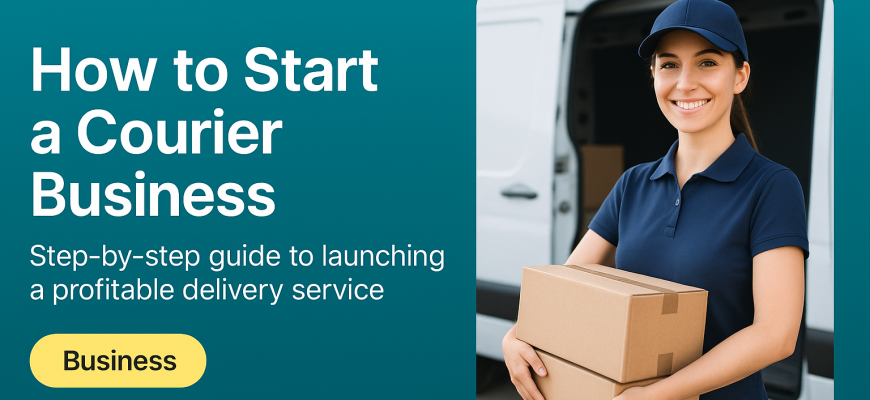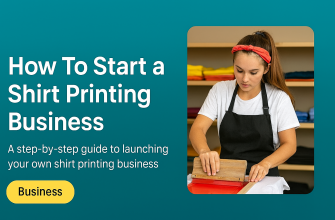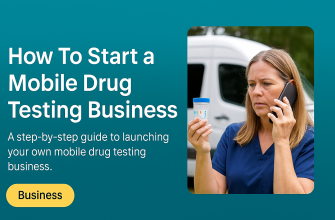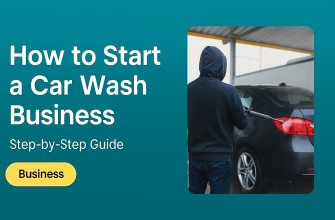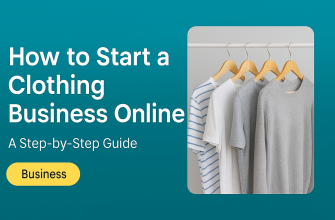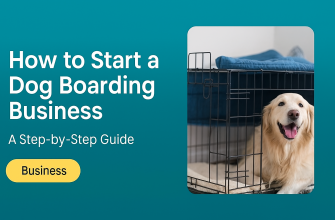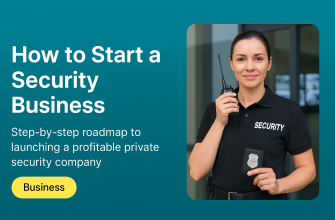If you’ve been dreaming of starting your own local courier business, you’re in the right place. I’m Alex Rivers, a business coach for women, and I’m here to guide you step-by-step through this exciting journey. The delivery and logistics industry has long been dominated by men, but guess what? Times are changing – women-owned firms in transportation-related sectors have grown by 50% in recent years. The market opportunity is huge as well: global courier services are projected to grow around 10% annually through 2030. Even though giants like UPS and FedEx account for about 70% of the U.S. courier industry, that still leaves plenty of room for smaller local players to thrive. In other words, there’s never been a better time for you to claim your space in this business.
This guide will blend practical how-to steps with a healthy dose of motivation and clarity. By the end, you’ll understand the startup costs, legal requirements, operational tips, branding strategies, and how to land those all-important first clients – all tailored for a complete beginner.
- Step 1: Research Your Market and Define Your Niche
- Step 2: Write a Solid Business Plan
- Step 3: Handle Legal Structure, Registration, and Licensing
- Step 4: Estimate Your Startup Costs and Plan Your Finances
- Step 5: Equip Your Business – Vehicles, Tools, and Insurance
- Step 6: Set Your Courier Services and Pricing
- Step 7: Streamline Your Operations and Deliver Great Service
- Step 8: Brand Your Business for Visibility and Trust
- Step 9: Market Yourself and Land Your First Clients
- You’ve Got This – Time to Deliver Your Dream!
Step 1: Research Your Market and Define Your Niche
Every successful business starts with understanding the market. Begin by researching your local area and defining exactly what kind of courier service you want to run. Courier services come in many forms, so choose a niche that excites you and fits a need in your community. For example, will you focus on:
-
Local document and package delivery – providing fast, same-day service within your city for businesses (like law firms delivering documents or retailers sending products to customers).
-
Specialized courier services – catering to a specific industry or need, such as medical courier work (handling lab samples or medications), food deliveries for restaurants, or transporting delicate items.
-
Business-to-business (B2B) or B2C deliveries – deciding who your customers will be on both ends of the delivery. Perhaps you deliver goods from local businesses to consumers, or you handle inter-office deliveries between companies.
Take note of the existing delivery options in your area. Is the market saturated with generic courier companies, or is there a gap you can fill? Look for pain points: maybe local small businesses struggle with expensive shipping or slow service – could you offer a more affordable, personalized option? Read reviews of competitors and see what customers complain about or wish for. This will help you spot opportunities to differentiate your service. The goal is to identify a specific need you can meet. If you can solve a particular problem or serve a niche better than anyone else, you’re more likely to find a loyal customer base.
As you define your niche, also consider the scope of your operations. If you’re new to the courier world, it’s often wise to start local and simple, then branch out as you gain experience. You might begin by serving a single city or region and offering standard same-day delivery, and later expand to faster options or wider areas. Keeping a clear focus at the start will make it easier to build a strong reputation for reliability in that area before you broaden your horizons.
Step 2: Write a Solid Business Plan
With your niche in mind, take time to write a basic business plan. Don’t worry – this doesn’t have to be a 50-page MBA thesis. It can be a few pages outlining the essentials of how your courier business will run. Having a plan is important because it forces you to think through key details and it can help if you seek funding or partnerships. Here’s what to include:
-
Your services and target market: Describe the types of deliveries you will handle and who your ideal customers are (e.g. “urgent document courier for law offices in my city” or “on-demand delivery for local online retailers”). Be as specific as possible.
-
Market analysis: Summarize the research from Step 1 – the demand you’ve identified, your local competitors, and how you plan to stand out.
-
Operational plan: Outline how you’ll actually perform the service. Will you start as a solo driver using your own car? What hours will you operate? How will customers request pickups (phone, website, app)? Thinking this through now sets you up for smooth operations later.
-
Startup and ongoing costs: List your expected expenses (we’ll dive deeper into costs in the next step). Include things like vehicle expenses, fuel, insurance, licenses, and marketing. This helps determine how much money you need to start and keep the business running.
-
Pricing strategy: Jot down a preliminary idea of how you will charge for services (more on setting rates later, but have a basic idea in your plan).
-
Financial projections: Estimate what you might earn in the first year based on your pricing and expected volume. It doesn’t need to be perfect – just a realistic guess to ensure the numbers can work.
-
Growth plan: It can be motivating to envision the future. How might you expand your services or fleet once things take off? For instance, you might start with one car and plan to add a van or an extra driver as business grows.
Writing these points out will clarify your vision. It becomes your roadmap that you can refer back to. Plus, if you ever seek a small business loan or bring on a partner, they’ll want to see that you’ve thought these details through. Even a simple one-page “lean startup” plan is fine – the U.S. Small Business Administration (SBA) has examples of lean plans if you need guidance. The key is to know where you’re going and how you’ll get there, on paper.
Step 3: Handle Legal Structure, Registration, and Licensing
Now let’s get the legal ducks in a row. Setting up your business legally might sound intimidating, but it’s a straightforward step-by-step process. First, choose a legal business structure that suits your needs. In general, your options include sole proprietorship, partnership, corporation, or a limited liability company (LLC). Many small courier startups opt for an LLC because it’s relatively simple to set up and it helps protect your personal assets from business liabilities. If you operate as a sole proprietor, that’s okay too – just be aware that there’s less liability protection (you and the business are legally the same). Consider consulting a professional if you’re unsure, but an LLC is often a sweet spot for new entrepreneurs balancing simplicity and safety.
Once you decide on the structure, register your business with the appropriate government authority. In the U.S., this usually means registering with your state (often via the Secretary of State’s office) and obtaining a federal Employer Identification Number (EIN) from the IRS. An EIN is like a social security number for your business – you’ll use it for taxes, opening a business bank account, and hiring employees down the line. Also be sure to file for a local business license or permit to operate in your city or county. Most municipalities require a general business license (sometimes called a business tax receipt) for any operating business – it’s usually a simple application and a small fee.
Important: Check if there are any special licenses or permits required for courier services in your area. Generally, for a standard courier using cars or vans, you don’t need a specific federal license. Your regular driver’s license and business registration are enough. However, requirements can vary by state and the nature of items delivered. For example, some states or countries might require a special courier permit or certification on top of a normal business license. If you plan to handle regulated goods, such as delivering alcoholic beverages or prescription medications, you may need additional licenses or certifications for those (many states require a permit to deliver alcohol, and medical deliveries might require healthcare training or certifications). Be sure to research local regulations for any such requirements. A good starting point is your state’s business licensing agency or local government website – they often list the permits needed for different types of businesses.
Lastly, take care of compliance basics: open a business bank account (to keep your finances separate and organized), and familiarize yourself with any tax obligations (like collecting sales tax if applicable, or just keeping receipts for expense write-offs). If you use a name other than your personal name for the business, you may need to file a “Doing Business As” (DBA) name registration in your county or state. Getting these legal steps done early will prevent headaches later and give your courier venture a solid foundation from day one.
Step 4: Estimate Your Startup Costs and Plan Your Finances
One great thing about a courier business is that it doesn’t have to cost a fortune to start – especially if you’re beginning as a one-woman operation with a vehicle you already own. It’s possible to launch with relatively little cash upfront. Let’s break down the typical startup costs so you can budget and plan how to fund them:
-
Vehicle expenses: If you have a reliable car (or bicycle, in a dense city) to use, your costs are minimal here – maybe just a tune-up and fuel. If not, acquiring a vehicle will be your biggest expense. Many couriers start with a used van or car to keep costs down. Leasing is another option if buying isn’t feasible.
-
Registration and licensing fees: These include the cost of forming your LLC (if you chose that structure), which can range from ~$50 to a few hundred dollars depending on your state, plus your local business license fee (often under $100). Don’t forget any special permits if needed (which can also come with fees).
-
Insurance: Budget for commercial auto insurance (more on this later) and possibly liability insurance. Insurance is critical and will be a recurring cost, but it protects you and your clients.
-
Equipment and supplies: We’ll detail equipment in the next section, but initially budget for things like a hand truck, cargo straps, maybe a GPS or routing app subscription, and office supplies. These costs are usually modest.
-
Marketing: Plan a small budget for branding and marketing materials. This could include designing a logo, printing business cards or flyers, creating a simple website, and online advertising. You can start lean here – for example, building a basic website can be done cheaply these days. Even setting aside a few hundred dollars for marketing can go a long way when you’re getting started.
-
Operating cash: It’s wise to have some cash buffer for ongoing expenses like fuel, vehicle maintenance, phone bill (you’ll be using your phone a lot!), and any unexpected costs in the first few months. Also consider if you’ll need to cover living expenses until the business income ramps up.
If you’re running the business from home and already own a vehicle, your initial costs can be very low. In fact, many people have started a courier service essentially with just a phone, a computer, and their car. For instance, one can start delivering independently with minimal capital outlay if the basics are in place. Of course, if you pursue a larger model – say, signing on as a delivery partner for a big company – it could require more capital. (As an example, joining Amazon’s Delivery Service Partner program to operate a fleet of Amazon-branded vans requires about $10,000 to start. But that’s a path you might choose; it’s not necessary if you’re building your own brand locally.)
Plan how you will fund these startup costs. Do you have savings you can invest? Will you keep your day job for a while and start the courier business on the side? If the amount is larger than you can handle alone, you might look into a small business loan or a microloan to cover a vehicle or equipment purchase. The Small Business Administration and many banks offer startup loans, especially if you have a solid business plan. Some entrepreneurs also borrow from family or tap into a line of credit. Choose the funding approach that you’re comfortable with. Remember, a courier business doesn’t usually require a huge investment to begin with – often well under $5,000 if you already have a vehicle – so finances shouldn’t be a barrier. Just start with a realistic budget, keep costs as lean as possible, and explore financing only if needed.
Step 5: Equip Your Business – Vehicles, Tools, and Insurance
With your plan set and finances in place, it’s time to get the practical essentials for running a courier service. At minimum, you’ll need a way to get around, some basic equipment for handling deliveries, and insurance to protect your venture.
Vehicle: This is the heart of your operation. Most local couriers start with a car or van. Ensure your vehicle is reliable and in good condition – nothing is worse for a delivery business than constant breakdowns. If you expect to carry larger items or many packages at once, a cargo van or small truck might be better, but those come with higher costs. Choose based on your niche: for example, a standard sedan can handle documents and small parcels, while a van is great if you plan on bigger deliveries or bulk orders. Whichever you use, keep it well-maintained for safety and professionalism (and keep it clean – appearances matter when meeting clients).
Equipment and supplies: You don’t need a ton of fancy gadgets, but a few tools will make your job easier and more professional. Consider acquiring the following (many of these are one-time purchases):
-
Hand truck or dolly: Useful for moving multiple packages or any heavy item by yourself. Even if you mostly carry envelopes, having a small folding hand truck can save your back on that one day someone asks you to move a 50-pound box.
-
Moving blankets, straps or bungee cords: These help secure items in your vehicle so they don’t shift or break in transit. If you’re delivering anything fragile or valuable, you’ll want padding and straps to keep it safe.
-
Packaging materials: It’s good to have some basic supplies on hand like tape, bubble wrap, and extra boxes or envelopes. While usually clients hand you items ready to go, occasionally you might need to help repack or secure an item.
-
Smartphone with GPS and apps: This might be obvious, but a reliable smartphone is your command center. You’ll use it for navigation, customer communication, and possibly for app-based order management. Make sure you have a good navigation app (Google Maps, Waze, etc.) and consider a route optimization app if you have multiple stops. You may also use it to capture proof of delivery (photos or e-signatures) if needed.
-
Computer & office supplies: A laptop or desktop will help with scheduling, invoicing, and record-keeping. Basic office supplies like invoice forms (if not using digital invoices), a notepad for tracking deliveries, and folders for receipts/licenses are worth having. This doesn’t have to be elaborate – a corner of your home can become “mission control” for your business with just a few organizing tools.
Insurance: This is crucial for your protection and credibility. As a courier, you are responsible for other people’s goods, and you’re on the road frequently – that introduces risks that must be covered. At the very least, you will need commercial vehicle insurance for your delivery vehicle. A personal auto insurance policy often does not cover business use, especially if you’re transporting goods for a fee. Talk to your insurance provider about a commercial auto policy or a rider that covers courier work. Yes, it will cost more than personal insurance, but it is non-negotiable – it protects you if there’s an accident while you’re on a delivery.
Beyond auto coverage, consider cargo insurance or inland marine insurance to cover the value of the packages you carry. If a valuable package gets lost or damaged under your watch, this insurance helps cover the cost. Some clients (especially businesses) may even require you to have cargo insurance before they hire you. Also, a general liability insurance policy is wise; it covers other mishaps (for example, if you accidentally damage a client’s property during a pickup, or someone slips and falls at your office, etc.). If you’ll have employees or drivers working for you, workers’ compensation insurance will likely be legally required as soon as you hire staff – it covers injuries on the job.
While sorting out insurance, ensure every driver in your business (even if it’s just you initially) has a valid driver’s license and a clean driving record. This not only is important for safety, but also keeps your insurance rates lower (tickets and accidents can spike your premiums). Emphasize safe driving from day one – you are literally driving your business’s reputation around.
In short, protecting your business with proper insurance and equipment is part of being a reliable courier service. Having the right coverage builds trust with clients (many will feel more secure knowing you’re insured). And the right tools make your day-to-day work easier and more efficient. It might feel like a lot of setup, but once these pieces are in place, you’ll be ready to roll with confidence.
Step 6: Set Your Courier Services and Pricing
Now let’s talk about your services and how to price them. This is where your earlier research and planning come together into a concrete offering. Clearly define what services you will provide – and just as importantly, what you won’t (at least initially). Will you offer guaranteed one-hour rush delivery, or only standard same-day? Will you operate 24/7 or just business hours? Setting these parameters helps avoid overpromising to customers. As a beginner, it’s often better to start with a straightforward service menu (e.g. “local same-day delivery within 50 miles, up to X weight, delivered by 5 PM if picked up by noon” or whatever fits your niche) and then expand services as you gain experience.
Once your service parameters are defined, you need to decide how much to charge. Pricing can be tricky – you want to be competitive to attract clients, but you also need to ensure you’re covering your costs and making a profit. Here are factors to consider when setting your rates:
-
Distance and time: Many couriers charge based on zones or mileage. A delivery across town will cost less than one to the next county. Also consider time – you might charge extra for rush jobs or after-hours/weekend deliveries.
-
Size/weight of parcels: Larger or heavier items can be priced higher because they might limit how many other deliveries you can do at the same time and may require more effort or a bigger vehicle.
-
Volume or regular jobs: If a client will give you regular daily deliveries or a large volume of packages, you might offer them a better rate per delivery (since guaranteed work is worth a discount). On the flip side, one-off jobs might be priced at a standard or premium rate.
-
Your operating costs: This includes fuel, vehicle wear-and-tear, insurance, any helpers you pay, etc. You must at least cover these costs in your pricing. Don’t forget to factor in things like tolls or parking fees if those come up in your area.
-
Value of your time: You’re not just driving; you’re managing the business too. Price in a way that pays you for your time on the road and some margin for the admin work you do.
-
Market rates: Research what other local couriers or big delivery companies charge for similar services. This gives you a ballpark. You might position yourself slightly below big competitors’ rates to attract business, but make sure it’s still profitable. If you offer a premium service (like super-fast delivery or white-glove handling), don’t be afraid to charge a bit more for that specialized value.
A common approach is a base fee for local deliveries (say, a flat rate for within city limits) plus an additional charge per mile for longer distances. For example, “$15 for pickup and delivery within the city, plus $1 for each additional mile outside city limits” – just an illustrative figure, you’ll set what makes sense in your area. You might also have weight classes (e.g. a small envelope vs. a 50-pound box) or different rates for same-day vs. overnight. Take some time to map out a simple rate card that you can explain easily to customers.
Once you have your pricing nailed down, be transparent with customers about how you charge and what they can expect to pay. Publish your basic rates on your website or have a rate sheet to give to clients. Clarity builds trust – nobody likes surprise fees. If there are extra charges (like if a delivery attempt fails because the recipient wasn’t home, or wait times if a client makes you wait at pickup), spell those out upfront as well. When using contracts or invoices, clearly itemize what the client is paying for so there are no misunderstandings.
Keep in mind your pricing might evolve over time. In the beginning, you might set prices somewhat lower to attract your first clients or undercut established competitors. As your value and reputation grow, you can adjust rates. Also, fuel prices or other costs may change, so revisit your prices periodically. The bottom line is to aim for a pricing strategy that’s competitive yet profitable – it should entice customers and sustain your business growth.
Step 7: Streamline Your Operations and Deliver Great Service
Running a courier business means juggling logistics every day – but that’s the fun part, right? To succeed, you’ll want to make your operations as efficient as possible while providing top-notch service that keeps customers happy. Here’s how to set yourself up for smooth operations:
Plan efficient routes: Time is money in the delivery game. When you have multiple deliveries, plan your route to minimize backtracking and idle time. You can do this manually using maps, or leverage route planning software. In fact, many experts recommend using route optimization tools from day one to maximize efficiency. There are apps (some even free or low-cost) that let you plug in all your stops and will sequence them in the most efficient order, taking into account traffic. Efficient routing saves fuel and allows you to complete more deliveries in less time, directly boosting your profit.
Stay organized and punctual: Develop a system for keeping track of all your pickups and drop-offs. This could be as simple as a checklist or spreadsheet when you start, or a more advanced delivery management software as you grow. Always know what you’re picking up, from where, to whom it’s going, and by when it needs to arrive. Being on time (or early) is one of the biggest factors in customer satisfaction for couriers. If you promise a delivery by 5 PM, aim to get it there by 4:45. Building a reputation for reliability will set you apart from competitors who often run late.
Leverage technology: Besides route apps, consider other tech that can streamline your operations. There are courier-specific software solutions that handle order taking, dispatching, GPS tracking, and electronic proof of delivery. Some allow customers to place orders online and track their packages in real time. As a beginner, you might not invest in a full software suite immediately, but be aware these tools exist. Even using a free tool to send automatic text updates can delight your clients – for example, a quick message like “Your package is on the way, ETA 30 minutes” goes a long way. In fact, nearly 75% of consumers say getting proactive status updates on their deliveries is “very important” to their experience. If you can provide tracking or timely notifications, do it – it signals professionalism. As you grow, you can integrate more automation (like dispatch software that sends updates and allows customers to e-sign on delivery). Efficiency and good communication are a courier’s secret weapons.
Customer service and communication: Remember that as a courier, you’re often dealing with urgent or important items – customers are trusting you with something that matters to them. Excellent customer service is key in this industry. Always communicate clearly and politely with clients. Confirm details of a job beforehand (addresses, timing, any special instructions). If anything goes wrong – say you’re stuck in traffic or a delivery is looking delayed – inform the customer immediately and apologize for any inconvenience. People are far more understanding when you keep them in the loop. Also, be personable and professional when you pick up or drop off. A friendly greeting and a thank you can leave a great impression. Little things, like remembering regular clients’ preferences or addressing them by name, can make your service feel personalized.
Handle packages with care: This might sound obvious, but it’s worth emphasizing. Treat every parcel as if it’s fragile and invaluable. Secure items in your vehicle so they won’t get damaged. If delivering documents, keep them flat and clean. If it’s raining, have plastic covers or bags to protect items from water. These careful touches will earn client appreciation and repeat business. You want your customers to feel confident that their delivery is in good hands at all times.
Prepare for the unexpected: In operations, things won’t always go as planned. Traffic jams, flat tires, or customers not available at drop-off happen. Have a basic contingency plan. Keep a spare tire and know how to change it (or have roadside assistance ready). Build a little buffer time into your schedule for urgent jobs in case of delays. If a recipient isn’t home, have a policy (do you leave the package in a safe place, or hold and retry delivery later?). When you handle these hiccups smoothly, clients will trust you even more. Reliability isn’t just about when things go right – it’s proven in how you handle things when they go wrong.
By focusing on efficient operations and stellar service, you’ll not only save yourself time and money, but you’ll also win customer loyalty. Many big delivery companies have a reputation for poor service or impersonal treatment of customers, which is a chance for you to shine. Your agility and attention to detail as a small business are strengths – use them to out-service the competition. Remember, in the courier world, your service quality is your brand. Deliver with a smile, keep clients informed, and always follow through on your promises. This will translate into glowing reviews, referrals, and a growing client list.
Step 8: Brand Your Business for Visibility and Trust
Branding might not be the first thing on your mind when starting a courier service, but it’s an important factor in attracting clients and standing out from the crowd. Your brand is essentially the personality and promise of your business. As a woman entrepreneur, you have an opportunity to make your brand uniquely yours and even highlight the fact that your company is woman-owned if you wish (many customers love supporting women-owned businesses!). Here’s how to build a strong brand from the get-go:
-
Choose a memorable business name: Pick a name that is professional and gives a hint of what you do. It could be straightforward (e.g., “Swift City Couriers”) or something creative that still relates to speed, reliability, or your local area. Make sure it’s easy to pronounce and spell – you want people to recall it and find you easily. Do a quick check that the name isn’t already in use in your region to avoid confusion.
-
Create a professional look: This includes a logo, color scheme, and any design elements you’ll use on your website, social media, or vehicle. You don’t need to spend a fortune on design; there are freelance designers and even DIY logo makers online. The key is a clean, simple logo that conveys reliability and speed (common imagery includes arrows, wings, roads, etc., but feel free to be creative and original). Consistency in your colors and fonts will make your brand look polished. If possible, also consider branding your vehicle with magnetic signs or decals of your company name and phone number – it turns your car into a moving advertisement and adds credibility when you show up for a delivery.
-
Craft your brand message: Beyond visuals, think about your company’s values and mission. What promise are you making to customers? Maybe it’s “Always On-Time, Every Time” or “Your Friendly Neighborhood Delivery Gal” – a slogan or tagline can be useful. Emphasize what makes you different: perhaps you offer personal, caring service that big companies lack, or you focus on eco-friendly bike deliveries, or you pride yourself on being a new option in a male-dominated field. Infuse this message into how you talk about your business in marketing materials.
-
Build an online presence: In today’s digital age, being easily found online is critical. Start with a simple website – it can be one page to begin with, listing your services, service area, contact info, and a little about you/your mission. Make sure it’s mobile-friendly. A website lends instant legitimacy (many people will search for you online before calling). Also set up a Google Business Profile (formerly Google My Business) so your courier service shows up in local search results and Google Maps. List your business in any relevant online directories or platforms for delivery services. Don’t forget social media: create a Facebook page, LinkedIn page, or Instagram – whichever platforms your target customers might use – and keep them updated with your latest info or even delivery stories. Social media can be free advertising if you post engaging content and join local community groups to mention your services.
-
Network and spread the word: Branding isn’t just online and logos; it’s also about your reputation in the community. Since you’re targeting local clients, get involved in local business networks. Join the chamber of commerce or local small business associations. Attend meetups or networking events for entrepreneurs or for industries you serve (e.g., if you want to serve medical offices, go to healthcare networking events). Introduce yourself as the owner of your courier business and have business cards ready. As a business coach for women, I always tell my clients: networking is how you get your foot in the door, build trust, and land those first clients. Especially in logistics and delivery, people often work with those they know or are recommended. So, make sure people know you and know what you do. Don’t be shy about promoting your new venture – you have something valuable to offer!
Branding is about building recognition and trust. When someone sees your company name or talks to you, they should immediately get a sense of professionalism and reliability. Over time, as you deliver great service, your brand will also be built by word-of-mouth. People will say “Oh, her courier service is fantastic – super dependable!” and that reputation is gold. So present yourself consistently and positively across all channels. You’re not just a person doing deliveries; you’re the CEO of your own courier brand, so act the part. And remember, your unique perspective as a woman in this industry is part of your story – if you want, leverage it to inspire others and connect with customers who appreciate diversity and empowerment in business.
Step 9: Market Yourself and Land Your First Clients
With your branding in place, let’s focus on getting those initial customers. Marketing and client acquisition can feel like the scariest part, but you’ve already laid much groundwork. Now it’s about proactively reaching out and demonstrating the value you offer. Here are practical strategies to win your first clients:
Leverage your personal network: Often, your first gigs will come from people you already know. Spread the word among friends, family, former colleagues, and social circles that you’ve started a courier business. You never know who might need a package delivered or who has connections to a business that does. Don’t hesitate to ask folks to refer you if they hear of someone needing delivery help. Personal recommendations build immediate trust.
Target local businesses: Make a list of businesses in your area that could benefit from a courier service. Think of law firms (delivering legal documents), doctors’ offices or labs (medical specimens and documents), print shops (delivering printed materials to clients), pharmacies (prescription delivery), florists or gift shops, e-commerce boutiques that sell locally, catering companies, etc. Visit or call these businesses to introduce yourself. You can drop off a flyer or brochure that outlines your services and intro pricing. Emphasize how you can save them time or improve their service to their customers. For example, “Hi, I run Swift City Couriers, a new local delivery service – I can help your shop offer same-day delivery to customers within town.” Even landing one or two steady business clients early on will give you consistent work and testimonials.
Offer an introductory deal: To entice trial, you could offer a first-delivery discount or a free trial run for businesses. For instance, “Your first delivery up to 5 miles is free” or “20% off your first month of deliveries.” This lowers the risk for a new client to give you a shot. Once they see your great service, they’ll likely stick around and pay full rate later. Be sure to deliver extraordinarily well for these trial runs to convert them into regulars.
Online marketing and SEO: Make sure people searching online can find you. We touched on the importance of a website and Google listing. Add to that some basic local SEO: include relevant keywords on your site (like “courier service in [Your City]”), encourage happy clients to leave you a Google review (positive reviews boost your visibility), and be active on local social media or community forums. For example, if your city has a local subreddit or a Facebook community, be a helpful member there and mention your services when appropriate. You could also post on LinkedIn or local business Facebook groups announcing your new business. The more visibility, the better.
Partner with complementary businesses: Consider reaching out to larger courier or logistics companies as well – sometimes they need to subcontract smaller local jobs. For example, maybe a national courier needs someone to handle last-mile deliveries in your town that they can’t do cheaply themselves. Sign up on courier marketplaces or broker platforms like CourierBrokers or other delivery job boards where shippers look for independent couriers. This can help you get some initial jobs to build experience (just be sure to price them so it’s worth your time). Also, any business that doesn’t compete with you but serves the same clientele could be a referral source. Maybe a local moving company or freight broker gets inquiries that are too small for them – let them know you’re happy to handle those small runs and you can refer clients to each other.
Provide stellar service and ask for testimonials: Your best marketing will eventually be word-of-mouth. In the beginning, go above and beyond for your early customers – arrive early, communicate often, deliver packages in perfect condition, and be super friendly. After completing a few jobs successfully, kindly ask those customers if they’d be willing to provide a short testimonial or online review about their experience. Positive reviews on Google, Yelp, or even a quote on your website will greatly influence others to trust you. Also, simply ask clients for referrals: “I’m so glad you’re happy with my service. If you know anyone else who might need deliveries, I’d really appreciate if you mention my company.” Happy customers generally love to support a new small business, especially a woman-owned local business, so don’t be afraid to ask.
Keep networking: Continuously attend industry and community events, as mentioned in branding. Networking is not a one-time thing – it’s an ongoing part of marketing. The more people who know you and what you do, the more referrals will naturally come your way. Over time, you’ll build a reputation and contacts that funnel clients to you without much effort. As one industry insider put it, it’s not just about who you know, but “who knows you.” Networking plants the seeds that ultimately land those first few clients and many more after.
Finally, be patient and persistent. Client acquisition can be slow at first. You might hear a lot of “no’s” or get little response initially. Don’t be discouraged – use each experience to learn. Maybe your pitch can be tweaked, or perhaps certain industries aren’t as responsive so you try a different angle. When you do get a chance, seize it and do excellent work. Your first handful of clients are gold: treat them like VIPs, because they are the foundation of your fledgling business. Over-deliver (figuratively and literally!) and they will reward you with loyalty and referrals.
Remember, every big courier company started with just a few deliveries and grew from there. You only need a few wins to start building momentum. Stay confident in the value you offer – a reliable, personalized courier service is something people need, and you’re here to provide it better than anyone else.
You’ve Got This – Time to Deliver Your Dream!
Starting a courier business as a woman entrepreneur is an exciting and empowering endeavor. You’ve just walked through the journey from the initial idea and planning stages to the nuts-and-bolts of operations, marketing, and growth. Now, it’s go time. Will it be challenging? At times, yes – like any business, you’ll face obstacles and learning curves. But remember this: every expert was once a beginner, and every successful courier company started with a single delivery. You’ve done the homework by reading this guide, and you’re more prepared than many who jump in blindly.
Keep in mind that you’re not alone on this journey. There is a growing sisterhood of women entrepreneurs in logistics and countless female business owners across industries proving that we can thrive in any field. In fact, over 12 million businesses in America are women-owned, contributing an astonishing $2.7 trillion in revenue – and those numbers keep rising. You are in great company, and you absolutely have what it takes to succeed. Whenever self-doubt creeps in, remember that other women have built courier businesses and broken into logistics before you; if they can do it, so can you.
As you set out to launch your courier business, keep this guide as a reference, but also trust your intuition and experience. You’ll learn and adapt as you go – that’s part of the entrepreneurial adventure. Celebrate every little win: your first completed delivery, your first compliment from a client, your first month in profit. These are milestones on your road to a thriving business.
Most importantly, stay persistent and passionate. Your determination will fuel your success on days when things get tough. Build a support network – whether it’s a mentor, a local businesswomen’s group, or fellow couriers you meet – because having allies to share tips and encouragement will boost you along the way.
I believe in you, and I’m excited for the road ahead of you (literally and figuratively!). You’ve got the knowledge, the plan, and the drive. Now, take a deep breath, put on your game face, and deliver excellence with every package. Your dream courier business is just around the corner. You’ve got this – it’s time to deliver your success!

